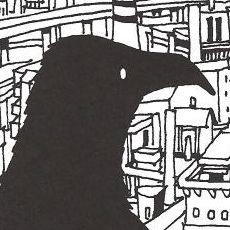Tag: studio 4c
-
A fatal Attraction
Read More →: A fatal AttractionIn what ended up being one of the cooler mornings I’ve had recently, I stumbled upon Koji Morimoto’s Attraction via twitter. Not knowing what to expect, but hearing it paired with the words “interactive anime”, I clicked. What followed was one of Studio 4C’s latest experiments with the anime medium. Their involvement with the upcoming…
-
Batman: Gotham Knight isn't as good as The Animatrix
/
/ ReviewsRead More →: Batman: Gotham Knight isn't as good as The AnimatrixDesigned to replicate the success of 2003’s The Animatrix, Batman: Gotham Knight is another anime anthology riding on the crest of a trendy movie franchise that seems destined, by virtue of Hollywood’s dollar, to be seen by many more people than your average Planetes or Gungrave. Like it or not, it’s exactly this kind of…
-
"It stopped, the rain. Wanted to check my tree, the apple." Review of Tekkonkinkreet
/
/ ReviewsRead More →: "It stopped, the rain. Wanted to check my tree, the apple." Review of TekkonkinkreetComing from the dream combination of the emphatically cool Studio 4C and much admired manga-ka Taiyou “Ping Pong” Matsumoto, Tekkonkinkreet is a movie I’ve long waited to see. Based on those two names alone, you should expect several things – let’s start with moody and stylish visuals; almost-surreal art that gleefully shuns fan-pandering anime conventions…
-
Japan’s increasingly superficial pop culture?
/
Read More →: Japan’s increasingly superficial pop culture?Superflat is a new phrase I have discovered today. It sounds like an obscure 60s rock band but is actually a growing artistic movement subverting, rejecting and critiquing Japan’s increasingly superficial pop culture; often by lampooning it with artwork that features the cute, smiling face of a young anime character surrounded by or oblivious to…
-
Mahou Shoujotai – Magical girl anime done good
/
/ ReviewsRead More →: Mahou Shoujotai – Magical girl anime done goodHaving stumbled across the passionate rants and pretty pictures over at the Star Crossed anime blog, I decided I’d take a chance on a magical girl anime called Mahou Shoujotai (also known as Tweeny Witches or Magic-Girl Squad – Alice). Up until checking out Mahou Shoujotai, my only other experiences of the traditional magical girl…
-
Tobira O Akete (Open the Door)
/
/ ReviewsRead More →: Tobira O Akete (Open the Door)Being a big fan of the works of Koji Morimoto (Memories: Magnetic Rose, Animatrix: Beyond), I was quite pleased when I managed to track down one of his lesser known shorts – Tobira O Akete (Open the Door). Imagine a decidedly more colourful version of British animation classic The Snowman; a young girl is swept…
-
Studio 4C's Comedy – Medieval fable set in Ireland
/
/ ReviewsRead More →: Studio 4C's Comedy – Medieval fable set in IrelandStory so far Set during Ireland’s War of Independence, a young Irish lass, besieged by the merciless English soldiers, seeks the help of a legendary swordsman who is rumoured to have supernatural powers. My impressions Studio 4C’s Comedy is a gripping 10 minute OAV from Kazuto Nakazawa; the main creative force behind Kill Bill’s ultra-violent…
